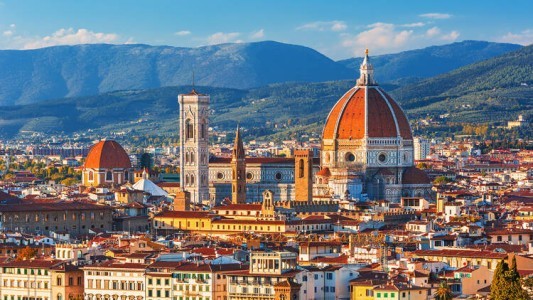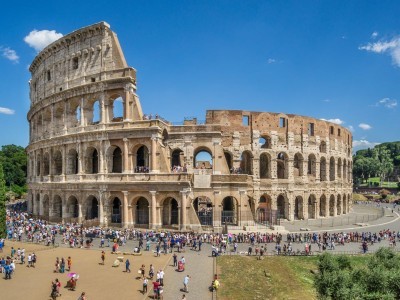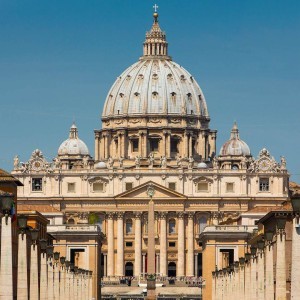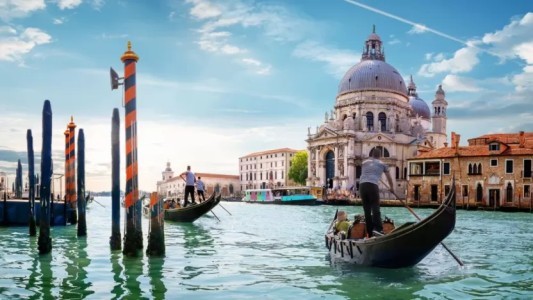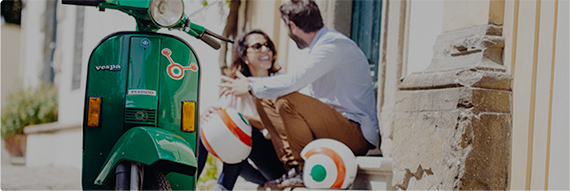Renaissance Florence
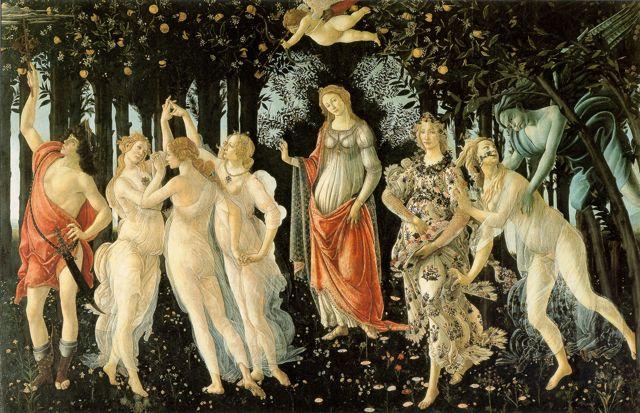
Florence is known as the cradle of the Renaissance and is still wonderfully preserved as a Renaissance city with a the wealth of Renaissance art and architecture that remain the city's unique treasures.
But why Florence? This incredible cultural movement of the Renaissance transformed not only Florence but eventaully the rest of Europe, influencing all aspects of life: science, philosophy, art, religion, politics and literature.
It all began in Florence with roots in the late 1300's, reaching its height by the later 1400's, although many scholars do believe that previously in the Middle Ages Florentine thinkers and movers such as writers Dante Alighieri and Petrarch and the artist Giotto planted the seeds needed for this movement to sprout in Florence. The city was also a wealthy, modern and forward-thinking city for its times (not to mention a free republic, one of the few on the peninsula), with an incredible wealth of natural resources on hand: the marble quarries from which the buildings and sculptures were made are all local; pigments for painting were readily available through the popular trade markets in Florence. The city was already used to glorifying itself through the embellishment of its churches with paintings, sculpture and architecture, and most importantly had plenty of money to do so.
Renaissance literally means “rebirth”, and it refers to the rebirth of two things: The first is the the rebirth of man, the greater importance of human presence on earth – people began to realise they could enjoy themselves here rather than the miserable medieval existence that was merely about waiting for the afterlife. The second was the rebirth of two important ancient cultures, Greek and Roman, which had been lost for more than 1000 years over the Middle Ages. It was the Florentines who first embarked on a journey to relearn from the glorious past of these cultures and increase their knowledge of science, mathematics, literature and the arts.
Florence was financially in a very good spot in the late Middle Ages, recuperating dramatically even after the Black Plague wiped out half the population in 1348, and experiencing not only a resurge of resources but also a resurge of life. It was an important trading centre on the route from Rome to Venice, and also known for its wool and its bankers across Europe. The Medici family, Florence's most famous bankers of all, made their fortune by loaning out money at an interest to an important network of clients across the continent. Their wealth led them to become the most prominent family in Florence, politically, and to remain that way for nearly 400 years, from 1350 to 1743 when the last of the Medici died.
As the city prospered economically, it was not only the government but also the wealthy families that invested money in art, adorning the city's churches and cathedrals. The Medici were one of the main contributing patrons of art in Florence, an idea that was seen as a “repayment” to society and, more importantly, to God. The bankers especially, whose livings were made by loaning out money at a great interest (usury, a borderline sin), used art patronage as a sort of payment of taxes to the church, a sure fire way to increase their chances of getting in to Heaven.
The wealthy merchant who financed the great marble façade of the Church of Santa Maria Novella, Giovanni Rucellai, not only had his name emblazoned across the front of the church in enormous letters, but very apty said in 1473 that he gained great pleasure and satisfaction in patronising art to help decorate the church because it served “the honour of God as well as the honour of the city and the commemoration of myself.” Indeed there was great competition among the wealthiest families to show off their status by creating the most beautifully frescoed chapels, contributing in turn to the rich beauty of the city.
The Renaissance in Florence was also one of those moments that are mysteriously blessed by a congregation of artistic genius. The artists, architects, thinkers and political figures who led the Renaissance were all born on the fertile soil in and around Florence, within the same century: Masaccio, Donatello, Ghiberti, Brunelleschi, Verocchio, Leonardo da Vinci, Botticelli, Ghirlandaio, Michelangelo, Lorenzo the Magnificent de' Medici and Machiavelli, just to name a few.



